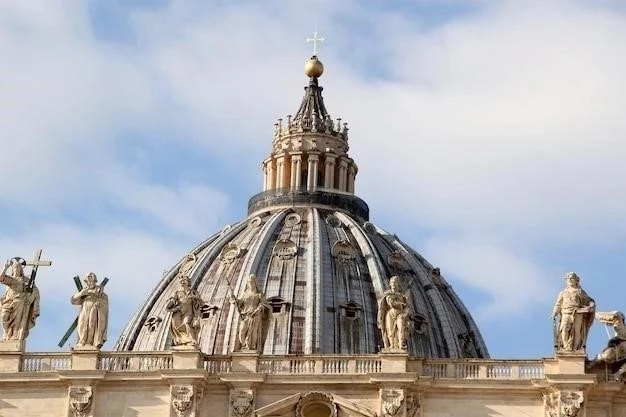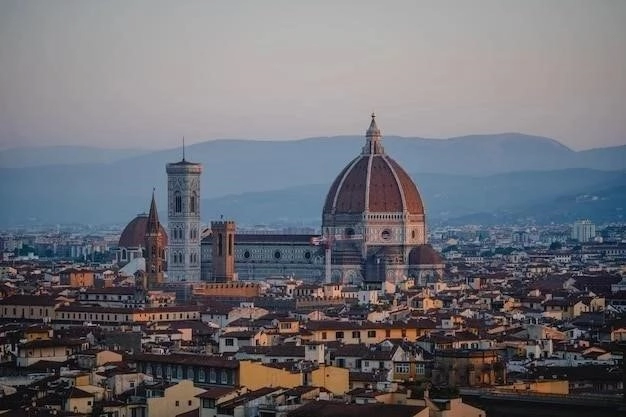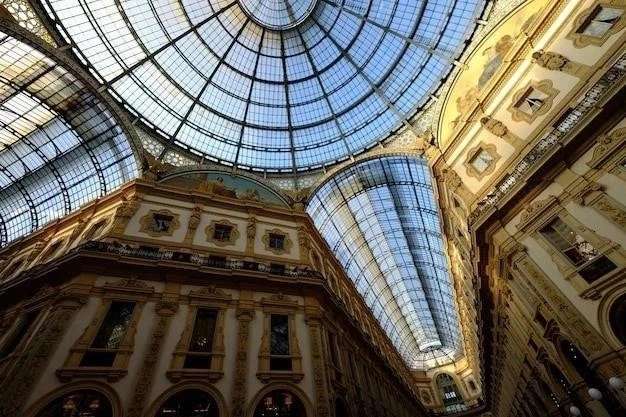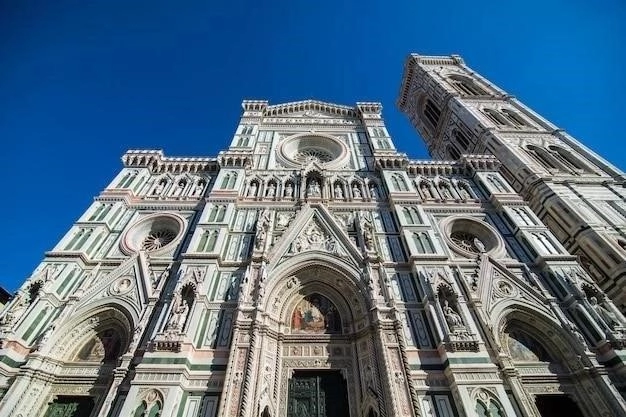The Duomo di Milano‚ a breathtaking cathedral located in the heart of Milan‚ Italy‚ is a testament to human ambition‚ artistry‚ and faith. Its towering spires‚ intricate facade‚ and awe-inspiring interior have captivated visitors for centuries. This article delves into the rich history‚ architectural marvels‚ and cultural significance of this iconic landmark.
A History Spanning Centuries
Early Beginnings and Political Intrigue
The story of the Duomo di Milano begins in 1386‚ when Archbishop Antonio da Saluzzo‚ with the support of Gian Galeazzo Visconti‚ the Duke of Milan‚ envisioned a grand new cathedral for the city. This ambitious project was intended to replace the aging Santa Maria Maggiore church and solidify Milans status as a powerful and prosperous city-state.
The initial design‚ influenced by French Gothic architecture‚ was conceived by architects Nicolas de Bonaventure and Jean Mignot. Construction commenced immediately‚ with the choir and apse taking shape first. However‚ the project faced numerous setbacks and delays due to political turmoil‚ financial constraints‚ and disagreements over the architectural direction.
A Fusion of Styles: From Gothic to Renaissance
Over the centuries‚ the Duomos construction became a collaborative effort involving numerous architects‚ sculptors‚ and artisans‚ each leaving their own mark on the evolving edifice. This led to a fascinating blend of architectural styles‚ primarily Gothic but incorporating elements of Renaissance and even Baroque influences.
During the Renaissance period‚ architects like Donato Bramante and Leonardo da Vinci were consulted‚ introducing a more classical aesthetic to certain elements. The cathedrals iconic dome‚ completed in the 16th century‚ reflects this transition‚ showcasing a Renaissance-inspired octagonal design.
Napoleons Influence and Final Flourishes
In the early 19th century‚ Napoleon Bonaparte‚ recognizing the Duomos symbolic power‚ ordered the completion of its facade. This final push‚ overseen by architect Carlo Amati‚ resulted in the ornate and intricately sculpted facade we see today‚ a grand testament to Napoleons ambition and the cathedrals enduring legacy.
It wasnt until 1965 that the very last details of the Duomo were finalized‚ marking the end of a construction process that spanned nearly six centuries. This extended timeline‚ while contributing to the cathedrals unique architectural blend‚ also symbolizes the dedication‚ perseverance‚ and artistic passion that went into its creation.

Architectural Marvels: A Symphony in Stone and Glass
The Facade: A Testament to Gothic Ornateness
The Duomos facade‚ a masterpiece of Gothic architecture‚ is adorned with a staggering array of sculptures‚ pinnacles‚ and decorative elements. Crafted primarily from Candoglia marble‚ a pinkish-white stone quarried from the nearby Candoglia quarry‚ the facade gleams under the Italian sun. Its intricate details‚ including over 3‚400 statues‚ 135 gargoyles‚ and 96 grotesques‚ depict biblical scenes‚ saints‚ historical figures‚ and fantastical creatures‚ showcasing the skill and artistry of the countless sculptors involved.
The Roof: A Forest of Spires and Statues
One of the Duomos most distinctive features is its accessible roof‚ a breathtaking expanse of spires‚ statues‚ and walkways offering unparalleled views of Milan. Visitors can ascend to the roof via stairs or an elevator‚ embarking on a journey through a forest of pinnacles crowned with statues of saints‚ prophets‚ and historical figures. The intricate system of flying buttresses‚ supporting the cathedrals weight and contributing to its structural integrity‚ is also visible from the roof‚ showcasing the architectural ingenuity of its creators.
The Interior: Awe-Inspiring Grandeur and Sacred Art
Stepping inside the Duomo is an experience in itself. The vast interior‚ illuminated by stained glass windows‚ evokes a sense of awe and tranquility. The cathedrals immense size is immediately apparent‚ with its five naves‚ soaring columns‚ and vaulted ceilings creating a sense of boundless space. Highlights of the interior include:
- Stained Glass Windows: The Duomos stained glass windows‚ some dating back to the 15th century‚ depict biblical scenes and religious figures in vibrant colors. These masterpieces of glasswork illuminate the interior with a ethereal glow‚ transforming the space throughout the day as the sun shifts.
- The Holy Nail: Suspended above the altar is a relic of immense religious significance: a nail believed to have been used in the crucifixion of Jesus Christ. Every year on the Saturday closest to September 14th‚ the “Rite of the Nivola” is performed‚ during which the Archbishop of Milan ascends to the nail in a specially designed contraption to retrieve and display the relic.
- The Treasury: The Duomos treasury houses a rich collection of religious artifacts‚ liturgical objects‚ and artwork spanning centuries. Among the treasures are reliquaries‚ tapestries‚ sculptures‚ and manuscripts‚ providing a glimpse into the cathedrals rich history and the opulence of the Catholic Church.
The Madonnina: A Symbol of Milan
Perched atop the Duomos tallest spire‚ the Madonnina‚ a gleaming golden statue of the Virgin Mary‚ stands as a symbol of Milan itself. This iconic statue‚ crafted from copper sheets covered in gold leaf‚ was sculpted by Giuseppe Perego and installed in 1774. The Madonnina‚ measuring over four meters in height‚ serves as a beacon visible from afar‚ a reminder of the citys devotion and the Duomos enduring presence.
The Duomo Today: A Cultural and Spiritual Hub
Today‚ the Duomo di Milano remains a vibrant center of religious‚ cultural‚ and civic life. It is the seat of the Archbishop of Milan and hosts numerous religious services and ceremonies throughout the year; Beyond its religious significance‚ the Duomo is a major tourist destination‚ attracting millions of visitors annually who come to marvel at its architectural splendor‚ explore its rich history‚ and experience its spiritual aura. The Duomo also serves as a venue for cultural events‚ including concerts‚ exhibitions‚ and light shows‚ further solidifying its role as a vital part of Milanese identity.
Conclusion: A Legacy of Faith‚ Art‚ and Ambition
The Duomo di Milano‚ with its soaring spires‚ intricate details‚ and breathtaking beauty‚ stands as a testament to the enduring power of human creativity and faith. Its complex history‚ spanning centuries and encompassing a fusion of architectural styles‚ only adds to its allure. More than just a cathedral‚ the Duomo is a symbol of Milan‚ a beacon of artistic achievement‚ and a source of inspiration for all who behold its grandeur.
A Living Monument: The Duomos Ongoing Narrative
The Duomo di Milano‚ however‚ is far from a static relic. It exists as a living monument‚ subject to the ongoing narratives of preservation‚ restoration‚ and adaptation. The very materiality of the Duomo‚ the Candoglia marble‚ demands this continuous dialogue. The porous nature of the stone necessitates constant care and conservation efforts to combat the ravages of pollution and time.
The Veneranda Fabbrica del Duomo‚ a centuries-old institution founded in 1387‚ shoulders the immense responsibility of safeguarding the cathedral. Their work encompasses not only the meticulous upkeep of the existing structure but also the ongoing research and implementation of innovative preservation techniques. This dedication ensures that the Duomo remains a vibrant testament to the artistry of past generations while evolving to meet the demands of the present and future.
The Duomo in the 21st Century: A Global Icon
In the 21st century‚ the Duomo di Milano transcends its geographical confines to hold a place within the global cultural landscape. Its image is instantly recognizable‚ reproduced countless times in photographs‚ paintings‚ and digital media. It serves as a potent symbol of Italy‚ representing the nations rich artistic heritage and architectural ingenuity;
Beyond its aesthetic appeal‚ the Duomo stands as a testament to the power of collective human endeavor. The dedication of countless individuals over centuries‚ from the initial visionaries to the skilled artisans and laborers‚ underscores the profound ability of humanity to conceptualize and realize projects of immense scale and lasting impact; The Duomo di Milano‚ therefore‚ is not merely a building; it is a testament to the enduring spirit of creativity‚ faith‚ and the pursuit of artistic excellence.
The Duomo di Milano: A Case Study in Architectural Dialogue
The Duomos significance extends beyond its immediate artistic and spiritual roles. It serves as a fascinating case study in how architecture embodies the dialogue between different eras and artistic sensibilities. While undeniably rooted in the Gothic tradition‚ the Duomo readily absorbs and reinterprets elements of Renaissance and even later styles.
This stylistic fluidity is partly due to its protracted construction period. The six centuries it took to complete the Duomo meant that changing aesthetic tastes and architectural fashions inevitably left their mark. Yet‚ this fusion is not a chaotic jumble. Instead‚ it reflects a conscious effort by successive generations of architects and patrons to create a harmonious whole‚ a building that reflects the evolving identity of Milan itself.
A Microcosm of Architectural Evolution:
- Early Gothic Influence: The Duomos initial design‚ conceived by architects like Simone da Orsenigo‚ bears the hallmarks of French Gothic architecture‚ evident in the pointed arches‚ ribbed vaulting‚ and the ambitious scale of the structure.
- Renaissance Interventions: The influence of the Italian Renaissance is evident in later additions‚ particularly in the work of Pellegrino Tibaldi‚ who oversaw the construction in the late 16th century. Tibaldis contributions‚ such as the Duomos facade‚ display a greater emphasis on classical proportions and decorative elements‚ reflecting the Renaissances embrace of classical antiquity.
- Neo-Gothic Revivals: Even in the 19th century‚ long after the Gothic period had passed‚ work on the Duomo continued‚ with architects like Carlo Maciachini completing the facade in a Neo-Gothic style‚ demonstrating the enduring appeal of the Gothic aesthetic and its capacity for reinvention.
Beyond the Material: The Duomo as a Symbol of Civic Pride
The Duomos construction was not merely an act of piety; it was a statement of civic pride. Financed by the citizens of Milan‚ the Duomo served as a tangible symbol of the citys wealth‚ ambition‚ and artistic patronage. This sense of collective ownership continues to this day‚ with Milanese citizens taking immense pride in their Duomo.
The Veneranda Fabbrica‚ with its centuries-long stewardship of the cathedral‚ embodies this enduring connection. The organizations commitment to preserving the Duomo for future generations underscores the profound bond between the people of Milan and their iconic cathedral.
The Duomo di Milano in the Global Imagination:
The Duomo di Milano stands as a powerful symbol of the enduring power of human creativity and collaboration. Its story‚ etched in stone and stained glass‚ transcends geographical boundaries to resonate with individuals across cultures and time periods. The Duomos legacy is a testament to the enduring allure of beauty‚ the power of faith‚ and the profound impact of human endeavor on the built environment. It serves as a timeless reminder that even the most ambitious dreams can be realized through dedication‚ artistry‚ and the unwavering belief in a collective vision.
The Duomo di Milano: A Symphony in Stone and Glass
Beyond its impressive dimensions and stylistic amalgamations‚ the Duomo di Milano captivates through the sheer artistry embedded within its every detail. It stands as a testament to the skill and dedication of generations of artisans – sculptors‚ stonemasons‚ glaziers – who transformed raw materials into a masterpiece of breathtaking complexity;
A Feast for the Senses: Exploring the Duomos Interior
Stepping inside the Duomo is akin to entering a realm where spirituality and artistic virtuosity intertwine. The vast interior‚ illuminated by the ethereal glow filtering through its stained-glass windows‚ evokes a profound sense of awe and tranquility. Among the Duomos most notable interior features are:
- Stained Glass Windows: The Duomo boasts a remarkable collection of stained-glass windows‚ some dating back to the 15th century. These vibrant compositions‚ depicting biblical narratives and scenes from the lives of saints‚ serve not only as decorative elements but also as powerful tools for religious instruction.
- Sculptural Masterpieces: The Duomos interior is adorned with an abundance of sculptures‚ from the life-sized figures lining its nave to the intricate reliefs embellishing its pulpits and altars. These works‚ executed by some of Italys most renowned sculptors‚ showcase the evolution of sculptural styles over centuries.
- The Sacred Heart Chapel: Located behind the high altar‚ this chapel houses a venerated relic – a nail believed to have been used during the crucifixion of Christ. The chapels opulent design‚ featuring rich mosaics and marble inlay‚ reflects its sacred importance.
Ascending to New Heights: The Rooftop Terraces
No visit to the Duomo is complete without ascending to its rooftop terraces. Accessible by stairs or elevator‚ the terraces offer breathtaking panoramic views of Milan‚ extending to the snow-capped Alps on clear days. Meandering along the rooftop walkways‚ visitors come face-to-face with the Duomos intricate architectural details‚ including its forest of spires‚ each crowned with a statue of a saint or biblical figure.
The Duomo di Milanos rooftop is more than just an observation point; its an immersive experience that allows visitors to appreciate the full scope of the cathedrals grandeur while engaging with the cityscape below from a unique vantage point.
The Duomos Enduring Relevance: A Timeless Symbol in a Modern World
In an era characterized by rapid technological advancement and fleeting trends‚ the Duomo di Milano stands as a powerful reminder of the enduring power of tradition‚ craftsmanship‚ and artistic expression. Its continued relevance lies not only in its status as a religious edifice but also in its ability to inspire awe‚ spark contemplation‚ and connect individuals across generations through a shared appreciation for beauty and human ingenuity.
The Duomo and its Urban Context: A Symbiotic Relationship
The Duomo di Milano doesn’t merely inhabit the city; it defines it. Located in the very heart of Milan‚ the cathedral’s presence reverberates through the city’s urban fabric‚ shaping its spatial organization‚ influencing its architectural landscape‚ and serving as a focal point for civic life.
From its inception‚ the Duomo was envisioned as the symbolic center of Milan. Its placement on the site of a former Roman basilica underscores this intention‚ establishing a direct link to the city’s ancient origins. The Duomo’s imposing scale and soaring spires‚ visible from afar‚ reinforce its centrality‚ drawing residents and visitors alike towards its iconic silhouette.
A Catalyst for Urban Development:
The construction of the Duomo had a profound impact on Milan’s urban development. The need to transport vast quantities of marble from the Candoglia quarries‚ located over 80 kilometers away‚ led to the construction of the Naviglio Grande‚ a canal system that connected the city to the quarries and facilitated the transportation of materials. This infrastructure project not only served the Duomo’s construction but also spurred economic growth and transformed Milan into a major inland port.
The Piazza del Duomo: A Stage for Civic Life
The piazza surrounding the Duomo‚ known as the Piazza del Duomo‚ is Milan’s most celebrated public space. Designed in the 19th century by architect Giuseppe Mengoni‚ the piazza’s grand arcades and elegant facades create a harmonious setting for the cathedral‚ enhancing its visual impact while providing ample space for gatherings and processions.
Throughout its history‚ the Piazza del Duomo has served as a stage for major civic events‚ from religious festivals and royal processions to political rallies and cultural celebrations. It remains a vibrant gathering place for Milanese citizens and visitors alike‚ a testament to the Duomo’s enduring role as the city’s symbolic heart;

Preserving a Legacy: The Challenges of Conservation
The Duomo di Milano‚ despite its monumental scale and seemingly impervious facade‚ is a surprisingly fragile entity. Constant exposure to pollution‚ environmental degradation‚ and the wear-and-tear of millions of visitors takes a toll on the cathedral’s delicate stonework‚ stained glass windows‚ and intricate sculptures.
The Veneranda Fabbrica‚ tasked with the Duomo’s preservation‚ employs a team of skilled artisans and conservators who work tirelessly to maintain the cathedral’s structural integrity and restore its artistic splendor. These efforts involve a range of specialized techniques‚ from laser cleaning to remove accumulated grime to the painstaking replacement of damaged stone fragments.
The ongoing conservation of the Duomo di Milano is a testament to the enduring power of human ingenuity and the profound responsibility we bear towards safeguarding our cultural heritage for future generations. It serves as a reminder that even the most seemingly timeless creations require constant care and attention to ensure their continued existence.

A Living Monument: The Duomo in the 21st Century
The Duomo di Milano‚ far from being a static relic of the past‚ continues to evolve in the 21st century. It navigates the complexities of its role as a sacred space‚ a cultural icon‚ and a symbol of civic pride in a rapidly changing world.
Balancing Tradition and Modernity:
The Duomos administration faces the ongoing challenge of balancing the preservation of its historical and religious significance with the need to engage with a contemporary audience. Initiatives like the installation of accessible ramps and elevators‚ alongside the adoption of digital technologies for visitor information and ticketing‚ reflect the Duomo’s commitment to inclusivity and accessibility without compromising its historical fabric.
A Platform for Dialogue:
In an increasingly interconnected world‚ the Duomo has the potential to serve as a platform for intercultural and interfaith dialogue. Its universal themes of faith‚ artistry‚ and human aspiration transcend cultural and religious boundaries‚ fostering a sense of shared heritage and promoting understanding between diverse communities.
An Inspiration for Future Generations:
Perhaps most importantly‚ the Duomo di Milano serves as an enduring source of inspiration. Its sheer scale and artistic ambition remind us of the power of human imagination and the heights that can be achieved through collective effort. As a testament to the creativity and resilience of the human spirit‚ the Duomo will continue to inspire awe‚ wonder‚ and a profound appreciation for the enduring legacy of human achievement for generations to come.

The Duomo as an Economic Engine: Tourism and Urban Regeneration
The Duomo di Milano‚ beyond its cultural and spiritual significance‚ stands as a powerful economic engine‚ driving tourism and fueling urban regeneration in Milan. Its iconic status attracts millions of visitors annually‚ generating revenue that supports not only the cathedrals maintenance but also the citys wider economy.
A Magnet for Global Tourism:
As one of Italys most recognizable landmarks‚ the Duomo draws visitors from across the globe. Its architectural splendor‚ coupled with its historical and religious importance‚ places it high on the itineraries of travelers seeking to experience Italys rich cultural tapestry. This influx of tourists translates into substantial economic benefits for Milan.
Supporting Local Businesses and Job Creation:
The tourism generated by the Duomo ripples through Milans economy. Hotels‚ restaurants‚ souvenir shops‚ and transportation services all benefit from the influx of visitors seeking to experience this architectural marvel. This increased demand sustains existing businesses and creates new opportunities for entrepreneurship and job growth within the city.
Revitalizing the Urban Fabric:
The Duomos magnetic appeal extends beyond its immediate surroundings‚ contributing to the revitalization of Milans urban fabric. The desire to capitalize on the Duomos popularity has spurred investment in infrastructure improvements‚ pedestrian-friendly zones‚ and the restoration of historic buildings in the surrounding area. This urban renewal enhances the overall visitor experience while improving the quality of life for Milans residents.
The Duomo: A Continuing Story of Faith‚ Art‚ and Urban Evolution
The Duomo di Milano‚ with its soaring spires reaching towards the heavens‚ stands as a testament to human ambition‚ artistic ingenuity‚ and unwavering faith. Its story‚ spanning centuries‚ is interwoven with the very fabric of Milan‚ reflecting the citys evolution from a medieval hub to a modern metropolis.
As a site of worship‚ an architectural marvel‚ and a catalyst for urban development‚ the Duomo di Milano transcends its physical presence. It embodies the enduring power of human creativity and the profound impact that a single edifice can have on the cultural‚ social‚ and economic landscape of a city. Its legacy‚ passed down through generations‚ continues to inspire awe‚ spark curiosity‚ and remind us of the transformative potential of human endeavor.










